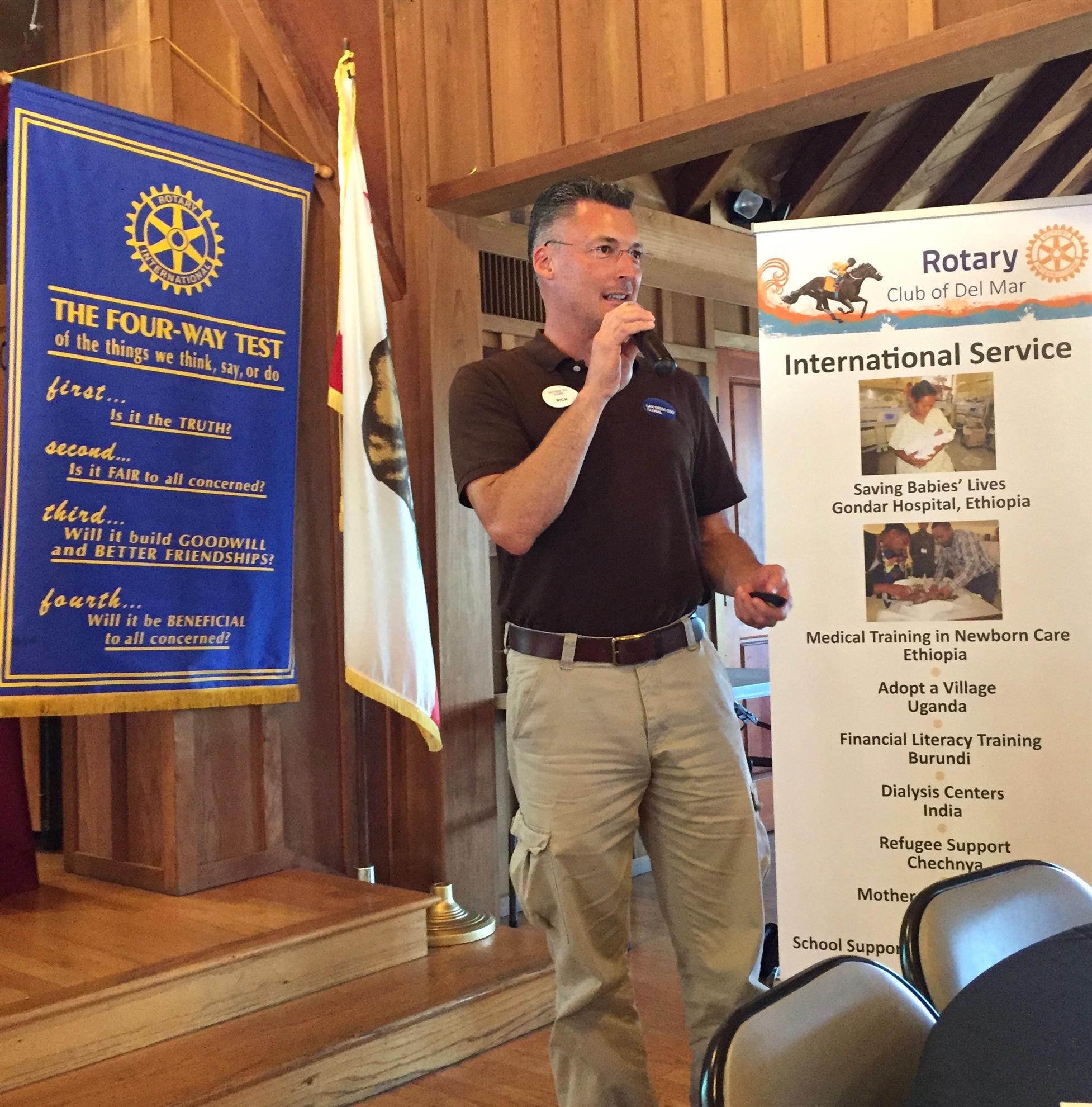
Rick Schwartz Ambassador for the San Diego Zoo
Rick Schwartz, Ambassador for the San Diego Zoo, began his presentation at the September 5, 2019 meeting with some history. In 1915 while driving past the grounds of the 1914-1915 Panama Exposition Dr. Harry Wegeforth heard a lion’s roar- the sound of one of many animals left behind when the Exposition ended. The roar inspired him to follow a lifelong passion for animals and start a zoo in San Diego. In 1916 Dr. Wegeforth founded the San Diego Zoological Society, which still exists today to support the zoo’s activities.
The San Diego Zoo has always been innovative. Dr. Wegeforth wanted the zoo’s animals to do what they do in the wild, so rather than cages he designed enclosures with moats that kept the animals safely confined. That innovation carried through with Dr. Charles Schroeder, the zoo’s first full-time veterinarian. Dr. Schroeder’s philosophy was that continuing to populate zoos with animals taken from the wild was unsustainable. As early as the 1950’s Dr. Schroeder envisioned a facility where animals had room to roam, and to breed, which culminated in the Wild Animal Park in the San Pasqual Valley. Schwartz said that Dr. Schroeder even made plans to have a monorail that eventually followed the path plotted by Dr. Schroeder.
Now, the San Diego Zoo is carrying out its mission: “Ending Extinction”. Evidence of their efforts is Edward, a southern white rhino born to Victoria. Edward was conceived using artificial insemination- the first successful birth in North America. The Zoo is using this success to learn about rhino reproduction in hopes to gain more knowledge that can be applied to the northern white rhino, of which there are only two females remaining in the world. Through the zoo’s work, fewer species will face extinction.